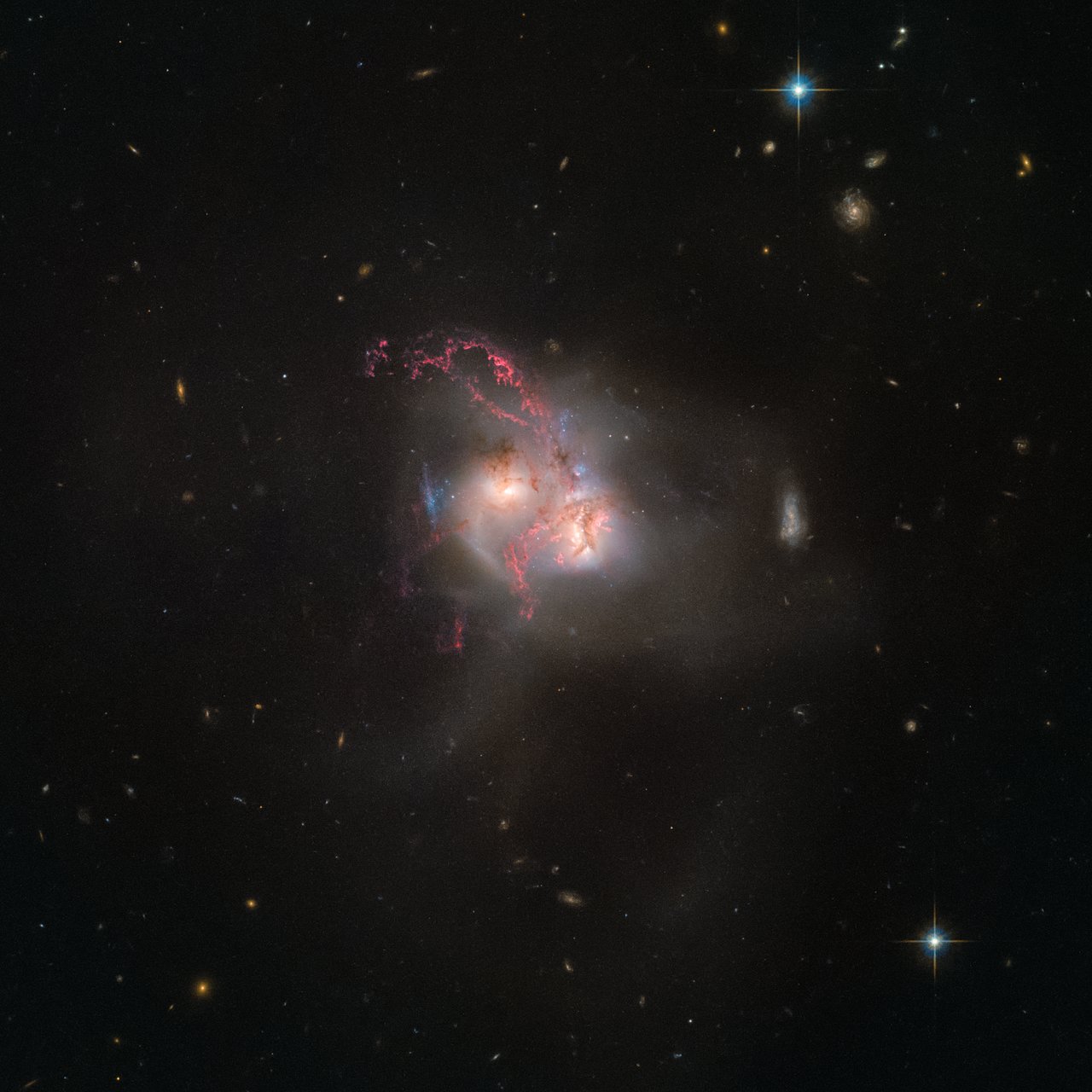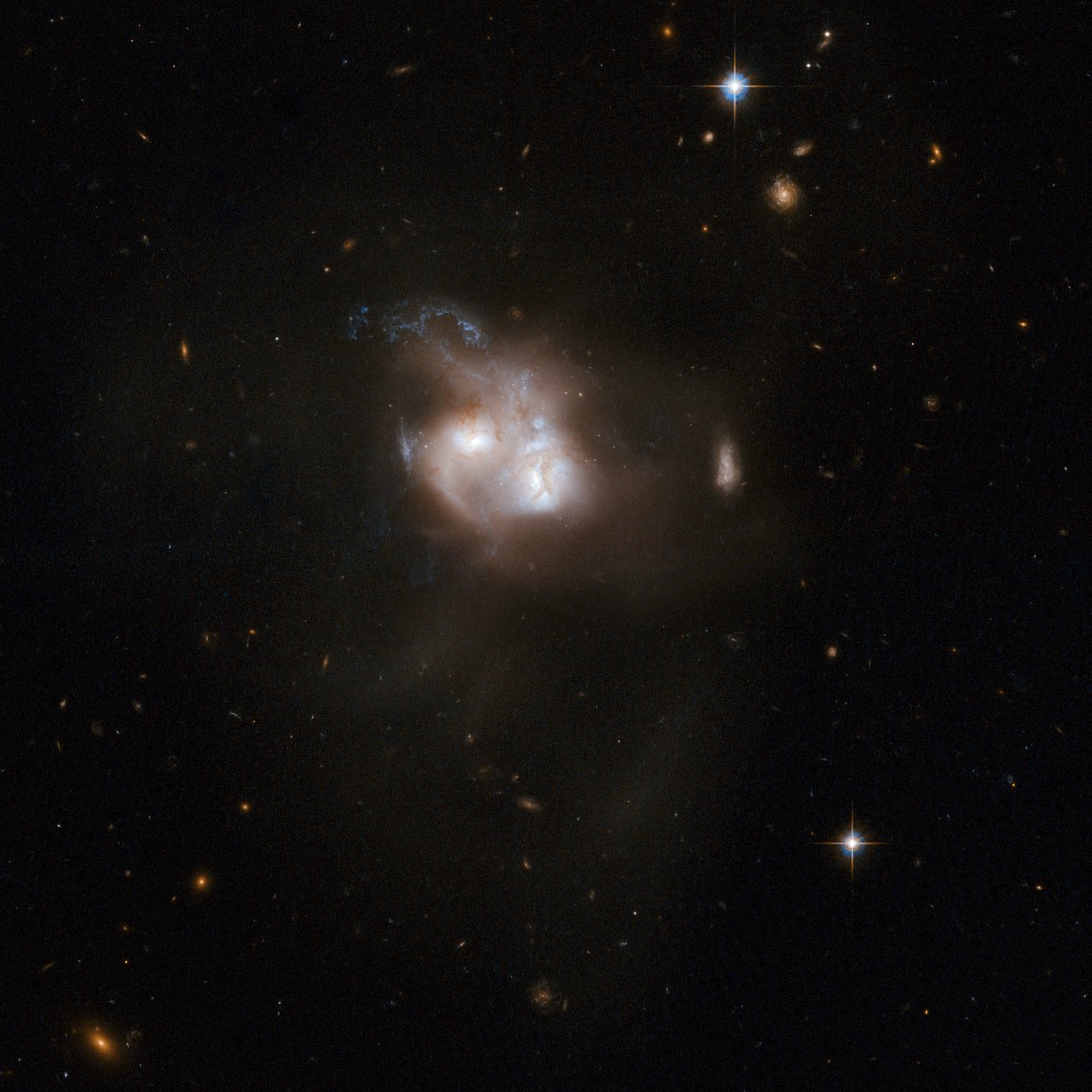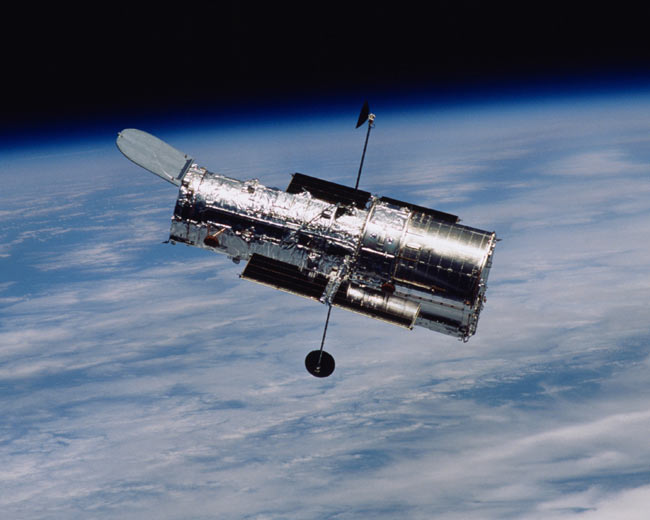Cosmic Crash: Galaxies Head for Collision in Stunning Hubble Image
A stunning new Hubble Space Telescope photo shows "a riot of color and light" emanating from the galaxy NGC 5256, according to the European Space Agency. The bizarre shape and colors in this galaxy show evidence that NGC 5256 is actually two galaxies merging into one.
The cosmic light show is happening about 350 million light-years away from Earth in the constellation of Ursa Major (which includes the well-known star asterism the Big Dipper). The hearts of the two disc-galaxies merging in NGC 5256 are just 13,000 light-years apart. With gas and dust freely available, bright new stars are forming in the region. [When Galaxies Collide: Amazing Space Photos]

"Interacting galaxies can be found throughout the universe, producing a variety of intricate structures. Some are quiet, with one galaxy nonchalantly absorbing another. Others are violent and chaotic," ESA stated. Some galaxy mergers can set off star explosions, also known as supernovas, or create quasars, which are extremely bright objects powered by supermassive black holes.
Galaxy mergers are common, even in our own backyard. The Milky Way, our home galaxy, is on a collision course itself with the massive Andromeda galaxy (M31); both galaxies are currently about 2.5 million light-years apart, and the collision is expected to occur in about 2 billion years. Right now, the Milky Way is eating up the Sagittarius dwarf spheroidal galaxy, too. These events spur galaxy evolution and star formation as gas and dust are mixed around.
NGC 5256 shows a common side effect of galactic mergers: new structures of gas and dust produced from strong tidal effects between the galaxies. Stars themselves rarely crash into each other, because the distances between the galaxies are so vast.

Each of the merging galaxies in NGC 5256 has an active nucleus where a supermassive black hole is gobbling up gas and debris. Other observations from NASA's Chandra X-ray Observatory revealed that these nuclei, and the hot gas near them, "have been heated by shock waves created as gas clouds collide at high velocities," ESA stated.
There's also a bonus for future astronomy research found in the new image. At the right of the picture is an object that is likely another pair of interacting galaxies, but they haven't been studied yet. Notably, NGC 5256 is close to a pair of more famous interacting galaxies, called Messier 51 (which includes the picture-worthy Whirlpool galaxy).
Get the Space.com Newsletter
Breaking space news, the latest updates on rocket launches, skywatching events and more!

Follow us @Spacedotcom, Facebook and Google+. Original article on Space.com.
Join our Space Forums to keep talking space on the latest missions, night sky and more! And if you have a news tip, correction or comment, let us know at: community@space.com.

Elizabeth Howell (she/her), Ph.D., was a staff writer in the spaceflight channel between 2022 and 2024 specializing in Canadian space news. She was contributing writer for Space.com for 10 years from 2012 to 2024. Elizabeth's reporting includes multiple exclusives with the White House, leading world coverage about a lost-and-found space tomato on the International Space Station, witnessing five human spaceflight launches on two continents, flying parabolic, working inside a spacesuit, and participating in a simulated Mars mission. Her latest book, "Why Am I Taller?" (ECW Press, 2022) is co-written with astronaut Dave Williams.
